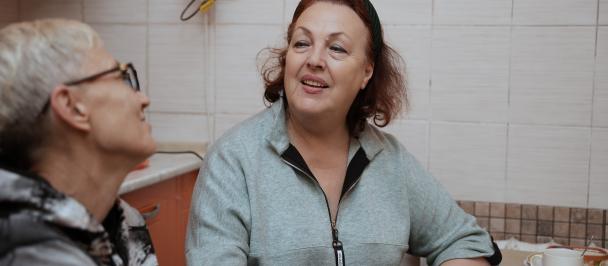Last month at the Universal Health Coverage Forum in Tokyo, I witnessed Prime Minister Shinzo Abe inspire world leaders and advocates as they pledged their support for universal health coverage – the idea that everyone, everywhere, should be able to access quality health services.
The global movement for universal health coverage has come a long way thanks to the Government of Japan’s leadership. The next step is for governments and donors to make concrete investments that will help make universal health coverage a reality and for civil society to continue holding them accountable.
There is lots of work to be done. Filling the gap in access to quality health services requires coordinated investments in innovation and healthcare delivery, which have traditionally been viewed as separate priorities, but in reality, are two sides of the same coin.
On the one hand, we desperately need new medicines, diagnostics and vaccines to fight deadly diseases. A warming world is spreading vector-borne diseases like dengue, malaria, and yellow fever faster and further than ever before, creating added urgency to develop innovations before these diseases spiral out of control. Antimicrobial resistance is also complicating the challenge.
At the same time, innovations mean little without strong healthcare systems to deliver them. Multidrug-resistant tuberculosis (MDR-TB) is a deadly strain of tuberculosis – affecting half a million people each year. Bedaquiline, a life-changing drug against MDR-TB, was approved in the United States more than five years ago. Yet to this day, bedaquiline is still not available in many low- and middle-income countries, even though these countries have rising rates of MDR-TB and are particularly vulnerable to outbreaks of the disease.
Achieving universal health coverage requires connecting the dots between innovation and delivery, ensuring that new medicines, diagnostics and vaccines are developed and ultimately reach the people who need them the most. Some governments, like Japan, are already stepping up to the challenge and delivering on their commitments to leave no one behind.
For example, the Government of Japan supports the Global Health Innovative Technology Fund (GHIT) and the Access and Delivery Partnership – two complementary initiatives that are working to bridge gaps in access to lifesaving innovations. The GHIT Fund is developing new medicines, vaccines and diagnostics that should benefit the world’s poorest people, while the complementary UNDP -led Access and Delivery Partnership strengthens health systems, ensuring that these innovations reach people in need.
Last month at the Universal Health Coverage Forum, we learned that at least half of the world’s population of 7.3 billion people still lack access to essential health services. Increasing investments in both innovation and healthcare delivery can help bridge this gap, helping to achieve health for all and ensuring that no one is left behind.
About the author
Mandeep Dhaliwal is the Director for HIV, Health and Development within the Bureau for Policy and Programme Support at UNDP. Follow her on Twitter: @Mandeep_Dh

 Locations
Locations




